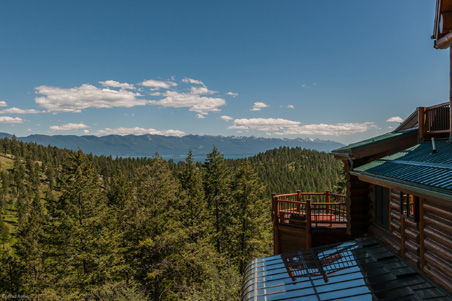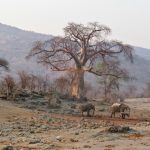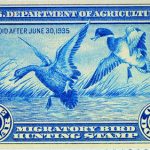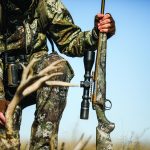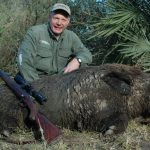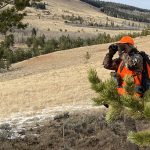How to purchase the hunting property you’ve always wanted.
For many of us, hunting is our escape from the overcrowded urban centers where we work, from the rush of traffic and the frenetic pace of city life. Pursuing game is about being immersed in nature and leaving behind the stress of deadlines, traffic jams, business meetings, and corporate boardrooms. Increasingly, passionate hunters are investing their money in hunting properties—their own private places of solace from the mayhem of daily life.
But hunting property is just that—an investment. And, as with any investment, you want to be certain that you are spending your money wisely. The reality is that not all properties—even those within the same county—are created equal. And, unfortunately, there are unscrupulous individuals out there who have no problem swindling hopeful hunters out of their money and turning the purchase of a dream property into a nightmare.
For that reason, Sports Afield has teamed with a group of trusted brokers to help simplify the process of hunting land purchase. Jeff Switzer, President and Managing Broker of Rocky Mountain Ranch and Land (www.rmranchland.com), and Derrick Volchoff, Accredited Land Consultant at Trophy Class Real Estate (www.trophyclassrealestate.com), shared with me a few important things to consider before, during, and after the land sale to help streamline the purchase process and to help you make certain you’re getting the most for your money.
Before You Buy
Prior to making the first call to a broker, you need to define what you want in a property and recognize the potential pitfalls of purchasing land without doing your homework. Volchoff recommends setting your goals early so you have a clear image in your mind of what you’re looking for. Will the land be for personal use, for family and close friends, a hunting club or partnership, or an investment that will offer a financial return from mineral and timber rights? Will you be hunting, fishing, or both? What about off-road use for ATVs, motorcycles, and snow machines? Will you kayak or boat on the property? Is there a potential for immediate return on investment and, if not, is that something that could prevent you from purchasing the property?
Like Volchoff, Switzer recommends that you examine the key elements that are most important in a property very early in the purchase process. Since he works primarily with properties in the western United States, Switzer says that water is a critical—and often overlooked—element when selecting a hunting property.
“Water can come in many forms including lakes, ponds, rivers, streams, or marsh areas,” Switzer says. But, he adds, there’s a difference between water and permanent water, and buyers need to understand that.
“It could also be only a seasonal creek bed that carries water during the spring snow melt and during rainy months. The presence of water on or near a hunting property is critical to attracting and holding game in the area. Some properties can also be enhanced through the development of springs, wells, ponds, or water tanks.”
Switzer also lists a host of other key elements that you’ll need on your land for optimum game numbers. Cover and forage are critical elements, regardless of where the property is located, and the required cover varies by species. Big-game species demand cover from the elements and good calving habitat. Upland birds also require cover, and waterfowl will—generally speaking—require some water. Forage is critical because, simply put, game animals don’t hang around areas where there’s nothing for them to eat. Figuring out what a particular game animal or bird eats and determining whether or not those forage sources can be found on the property you’re eyeing are critical first steps to make certain you don’t buy a hunting property that’s devoid of the game you want to hunt. Simply finding an elk or deer track is not proof positive that the land you’re considering purchasing holds those animals in large numbers or during the fall hunting season. Simply because a property’s listing exclaims Deer! Elk! Wild Turkey! does not mean that those species are abundant on the property—or that they are there year-round. In my home state of Ohio, abandoned pasturelands (many of which are listed as phenomenal whitetail deer leases) are overrun with species like bush honeysuckle that provide cover but very little food for deer. The whitetails that live on those properties must seek food sources outside the borders of the plant monoculture abundant honeysuckle yields. While it’s entirely possible that your neighbor is getting weekly trail camera images of great bucks, you’ll have to do some property improvement before you’ll hold a lot of good deer on a property overrun with that invasive plant.
Property size and layout are also particularly important, says Switzer. Of course, property size is often limited by budget, but a five-acre property that is secluded and provides forage and cover for game will be more productive than a ten-acre property without food, water, or cover. Property size also dictates return on investment from timber and mineral rights. Switzer says that it’s critical that hunters understand the limitations of hunting small property, especially when pursuing big game. While a hundred-acre parcel of woods in Ohio almost certainly has some whitetail deer year-round a piece of land that same size in Montana may only see elk very late in the year when they’re pushed down from higher elevations by heavy snow. If that Montana elk property is where you want to hunt bulls during the fall bugling season, well, you’re out of luck.
Unless, of course, your property abuts public hunting land. Having the American public at large as your next door neighbor can be a good thing or a bad thing. One of the best scenarios, Switzer says, is if your parcel of hunting land adjoins public land that receives very little hunting pressure because access is limited. Expect those properties to fetch top dollar and vanish from the market in a few days. But if you happen to land one of those properties next to a fantastic, limited-access hunting area with thousands of acres of public property you’ve done quite well. If, however, the property you are considering purchasing adjoins public land with lots of access and lots of hunters your odds of tagging out at your vacation property are usually less. Speaking of access, Switzer also suggests determining whether or not the property is close to a major highway or, worse yet, bisected by a busy road. If so, you’ll run that risk that game will be spooked by road noise and that you’ll have to deal with trespassers and poachers.
If neighboring properties are owned by private individuals you’ll need to try to determine what problems might occur from activity on adjacent land.
“Adjoining properties can have a major impact on the presence of game on your property,” Switzer says. He suggests mapping your hunting property to determine what’s going on at the perimeters. Switzer also says that it’s critical to determine the property’s history and to take the time to research state regulations and hunting statistics for the region or county. What are the odds of success? What species are legal to hunt, when are hunting seasons and are there any special regulations or benefits for landowners?
Then there’s the other crucial aspect—price. How much can you spend? If you’ve got plenty of financial backing then you’ll be able to cast a broader net and pay extra for amenities like established water points and more modern and spacious living areas.
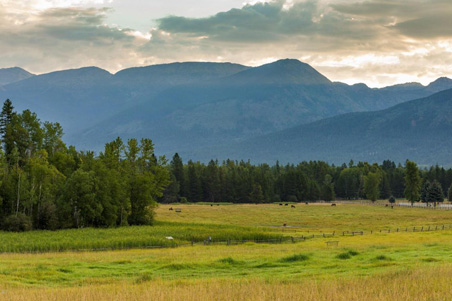
The scenery is stunning–but make sure there is plenty of game in the area, too.
Contacting a Broker
Both Switzer and Volchoff emphasize the importance of finding a certified, qualified broker. Volchoff recommends asking your broker about his or her education and accreditations. Are they an Accredited Land Consultant (Or ALC, a designation through the National Association of Realtors)? And, Volchoff says, a great hunting property realtor should have one more important qualification: sporting experience.
“In other words, does the dog hunt?” Volchoff says. There are a lot of hunters, there are lots of certified brokers, but if you are actually purchasing land on the assumption that it is suitable for hunting it helps to have a broker that’s experienced enough to, say, determine whether a tracks in the dirt road on a property they are selling were made by elk or domestic cattle.
Volchoff also says you’ll want to ask about the broker’s service area and recent transactions, and to negotiate and sign an agency agreement identifying your expectations and broker responsibilities. Understand what your broker charges and be prepared to pay accordingly.
Once that’s done, Volchoff recommends establishing the price range for vacant and improved properties (he recommends staying open to both) with your broker. Set a time frame for purchase, and be certain that you have the funds available.
“Be prepared to pull the trigger,” Volchoff says. “The most desirable properties sell quickly.”
To that end, he recommends working covertly. You’ll need to complete research and identify your options, but consider your property search simply another form of hunting.
“Trophy properties are like trophy game,”Volchoff says. “Too much activity in the zone will limit your success or invite unwanted competition for your target property.”
Using public records (county tax information, hunting statistics, satellite mapping) will help you prepare for the next step—and on-site visit. Your broker will help you access the property via vehicle, ATV, or on foot, but take a very close look at the land. Be sure it’s what is advertised and look to be certain that it has what you want. If it does, act quickly. Your broker will help you prepare and offer, and, with any luck, your hunt for the perfect piece of land will be successful.
For more information, visit www.sportsafieldtrophyproperties.com.

